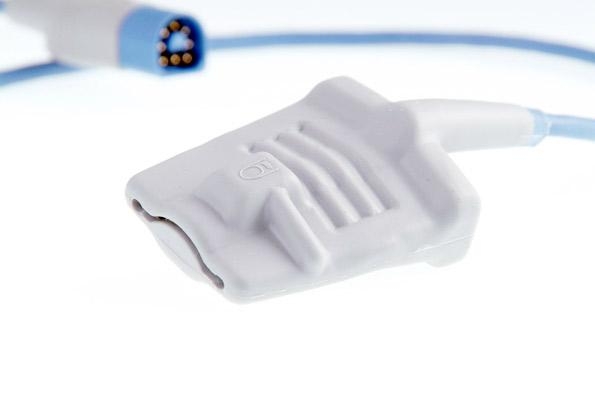In many cases of clinical application, we use the repetitive blood oxygen sensor as the probe for blood oxygen saturation measurement. Because the probe will be used repeatedly in different groups of people, the medical staff will clean and disinfect the repetitive blood oxygen probe before and after use.
How to clean the blood oxygen probe?
When cleaning the sensor, we can wipe the probe with a soft cloth or wet wipe dipped in isopropyl alcohol or 10% bleach cleaning solution to ensure that there is no foreign matter such as sebum on the blood oxygen probe and no optical components on the probe. Dirt or blood.
For the finger-clip probe, we can open the clip to clean the inside, but we can't force it to fully open to avoid damage to the probe. Likewise, the wrapped probe should not be turned over during the cleaning process as damage may result. When cleaning the sensor cable, the best option is to gently wipe from the plug end towards the sensor end, this will minimize damage to the cable.
When cleaning, pay attention to avoid splashing liquid or water into the plug end, which will cause the gold pins inside to be corroded and cause poor contact.
For some sensors that can be immersed in water for cleaning, we can put them in the prescribed disinfection water or cleaning solution for cleaning and disinfection, but it should be noted that the plug end cannot be put into water or water splashed into the plug in. During the soaking process, do not exceed the specified time for a long time to avoid damage to the probe.
After cleaning the probe and cable, wipe it dry with a clean soft cloth or air dry it. For products that are not autoclaved, no sterilization is required after cleaning. After the probe is air-dried, it can be stored directly according to the storage standard.
Since each manufacturer has different product cleaning instructions, we need to pay attention to the following before cleaning the probe:
• Use the specified disinfectant. Otherwise the probe may be deformed or damaged.
• Refer to the disinfectant manual for proper use of disinfectant (concentration, soaking time, ventilation, etc.).
• Do not let the connector get wet with disinfectant or water. If it gets wet, wipe it thoroughly. Do not use the probe with wet connectors.
• After sterilization, the light transmitter and light receiver windows may be tinted without affecting the measurement.

